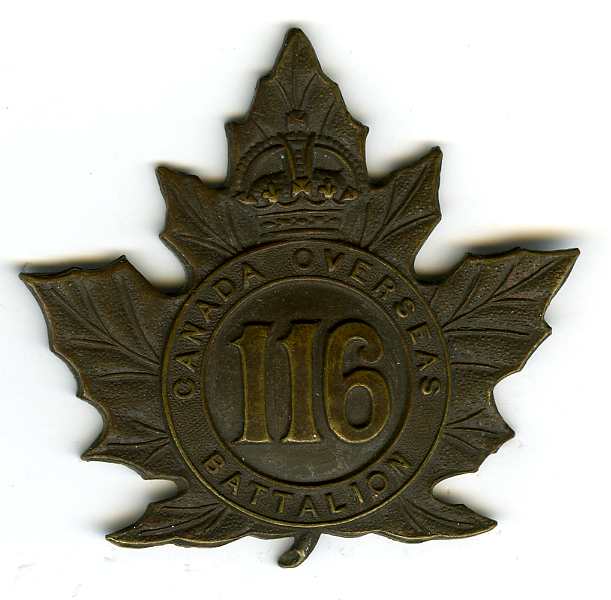Lieutenant-Colonel Samuel Sharpe one of two sitting Members of Parliament to die in the Great War, and the only Member elected on the battlefield.
For almost 100 years, Samuel Sharpe’s name buried with thousands who had succumbed to shell shock. The life and death of Sam Sharpe helps us to understand the impact of post-traumatic stress disorder (PTSD), and to understand that it is as a condition requiring treatment, rather than bringing shame.
Early life of Samuel Sharpe
Samuel Simpson Sharpe born 13 March 1873 in Zephyr, Scott Township, Ontario to George and Mary Ann (Simpson) Sharpe. Educated in Uxbridge, Ontario and at age 16 joined the 34th Ontario Regiment where he eventually earned a Long Service Medal, having been commissioned in 1894 and rising to Major and second-in-command.
Post-secondary education at the University of Toronto earning a Bachelor of Arts in political science and a law degree at Osgoode Hall. In 1895 became a barrister and solicitor in Uxbridge. Finally, in 1903 he married Mabel E Crosby.
In 1908 elected as Conservative MP for the riding of Ontario North, and re-elected in 1911. Prime Minister Robert Borden considered Sharpe for the Minister of Militia and Defence, before eventually choosing Sam Hughes who promptly interfered with Sharpe’s plans to command a battalion once the war began. No doubt, Hughes, with his infallible memory, recalled several past disagreements with Sharpe in the militia.
116th Canadian Infantry Battalion
The 116th Canadian Infantry Battalion organized in November 1915 under the command of Lieutenant-Colonel Samuel Simpson Sharpe.

The 116th Battalion mobilized at Uxbridge, and recruited in Ontario County. Embarked from Halifax on 24 July 1916 aboard SS OLYMPIC. Disembarked England 31 July 1916 with a strength of 36 officers, 948 other ranks.
Captain James Moore the MO declared him fit on 10 February 1916 at Uxbridge. Standing 5′ 7″ tall, 168 pounds with good physical development at age 42.
Medical Board on 19 September 1916 at Bramshott declared him fit for service.
France
Arrived in France 11 February 1917 with the 3rd Canadian Division, 9th Canadian Infantry Brigade. Lieutenant-Colonel Samuel Sharpe granted 10 days leave to England on 2 June 1917, returning on 15 June 1917.

Lt-Col Sharpe granted 10 days leave to England on 16 September 1917, returning on 27 September 1917.
On 2 November 1917, Brig-Gen Hugh M Dyer, commanding the 7th Canadian Infantry Brigade, wrote a letter of appreciation for the battalion’s service during their time in the area.
Mentioned in Despatches
Lieutenant-Colonel Samuel Sharpe Mentioned in Sir Douglas Haig’s despatch dated 7 November 1917.
Major George Pearkes transferred to the 116th Battalion on 30 November 1917.

General Lipsett visited the battalion on 15 December 1917.
The officers proceeded to Pernes to have a group photograph taken on the afternoon of 16 December 1917. Apparently this photograph not included in the official CWRO record.

The following day, the Commanding Officer, Senior Major, and several officers proceeded to Ferfay to attend a Smoke Demonstration.

Leave
Lieutenant-Colonel Samuel Sharpe’s service record notes he was granted 14 days leave to England on 26 December 1917. Neither the unit war diary, nor the brigade war diary mentions anything about Sharpe’s leave.
Major George Pearkes
George Pearkes now commanding the battalion would receive his fifth wound stripe with the 116th Battalion.

Distinguished Service Order
Sharpe awarded the DSO, London Gazette 28 December 1917 for having personally led his battalion at Passchendaele.

On 9 January 1918, Lieutenant-Colonel Samuel Sharpe detained in England whilst on leave for purpose of attending Senior Officers School (6th Senior Officers Course).
PTSD
Sharpe suffered increasing melancholy and then a mental collapse, the result of losing so many of his men, including John Walton, a close personal friend.
Sharpe admitted on 17 March 1918 to Granville Special Hospital – General debility. Discharged after 71 days on 13 May 1918.
Lieutenant-Colonel Samuel Sharpe returned to Canada on Compassionate Grounds from Witley Camp, 13 May 1918.
Montreal
While on a train home, he suffered a collapse, and hospitalized in Montreal. On 25 May 1918, Lt-Col Sharpe jumped to his death from a hospital window at age 46. Some said he could not face the prospect of returning to Uxbridge and facing the families of those who had died, many of whom he had recruited personally. Of the 1,100 men he had recruited, only 160 were on active duty when they returned.

Uxbridge Cemetery

Private Lewis Arthur Wain 746446 of the 116th Battalion also buried at Uxbridge Cemetery. Lewis died 4 September 1919. Son of the late Henry and Mary Wain; husband of Olive Wain, of Uxbridge.
Also of the 116th, Private William Richardson 746221 died the following month, 27 October 1919. Son of William and Ann Richardson, of Colne, Lancs., England; husband of M. A. Richardson, of Uxbridge, Ont.
Colours
Colours presented by The Junior Relief Club of Uxbridge on 20 May 1916. Deposited in Westminster Abbey on 7 October for the duration of the war. Placed in church in Cannington, Ontario after the war, transferred to the Court House, Whitby where they were to remain until the postwar reorganization of the 34th Ontario Regiment.

The 116th Battalion perpetuated by The Ontario Regiment.
More
- Home of CEFRG
- Blog
- CEFRG on FaceBook
- CEFRG on YouTube
- Soldiers and Nursing Sisters
- Units (Brigades, Battalions, Companies)
- War Diary of the 18th Battalion (Blog)
- 48th Highlanders of Canada
- 116th Battalion CEF – The Great War
- Saskatoon Light Infantry
- Les Soldats du Québec Morts en Service
- The Aerodrome (Aces and Aircraft)
- Montreal Aviation Museum
- Battles of the Great War
- Cases
- Cemeteries
- Memorials
- On This Day
- About CEFRG
